A few months into the global COVID-19 pandemic there is growing knowledge about the relationship between the virus and animals. In a recent column, I discussed how wild bats were the likely origins of the virus and how future spill-over events may be prevented by ending the global wildlife trade. Virus origins aside, there have […] Read more
Stories by Jamie Rothenburger, DVM
Ending wildlife trade key to preventing next pandemic
A series of unlikely things led to the current pandemic. Most probably, the SARS-CoV2 virus (the virus that causes COVID-19) lived among bats without causing them illness. These bats shed the virus (viruses are often shed intermittently by their hosts) while in contact with an intermediate host animal that was capable of being infected. It […] Read more

Clostridial bacteria often behind horse intestinal ills
In my previous column, I discussed clostridial infections in the muscles of horses, most often following injections, that can lead to the disease known as malignant edema. In addition to serious muscle infections, clostridial bacteria can also be an important cause of intestinal disease in foals and adult horses. Two main species are involved, clostridium […] Read more
Wounds major cause of malignant edema
Many readers may be familiar with blackleg, the disease that affects cattle, sheep and goats in this part of the world. Caused by a resilient, spore-forming bacteria, blackleg can be prevented through vaccination. The clostridial group of bacteria can also cause significant illness in horses. The first, which I will discuss below, affects the muscles, […] Read more
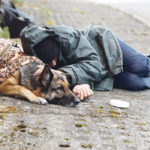
Disease detection just one way dogs are beneficial to humans
Dogs bring many benefits to our lives, several of which I explored in my previous column. On farms, dogs herd sheep and cattle and protect livestock from predators. Working dogs assist people with disabilities and improve public safety in police departments across Canada. Dogs also enhance society in less obvious roles. Disease detective dogs are […] Read more

Dogs can play an important role in keeping humans healthy
Modern science is finally catching up to what dog lovers have known for thousands of years — that dogs are good for people. From understanding disease to helping us live healthier lives, the following are a few examples of how dogs benefit people. Since dogs share our environment, they are exposed to similar water, air […] Read more
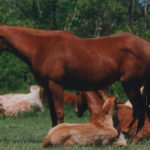
Osteochondrosis big cause of lameness in young animals
Osteochondrosis is a disease that affects the joints of young horses, pigs and dogs. In a normal, healthy joint, a thick layer of cartilage lines the joint surface, allowing smooth movement for the ends of bones to glide past each another. A thick layer of bone is normally located immediately below this joint cartilage. The […] Read more
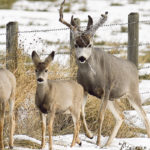
Vet advises against feeding grain to wild deer
A post showed up multiple times on my Twitter feed last week. The posted video showed a covered area with a make-shift table surrounded by a herd of deer voraciously munching on the grain strewn across its surface. The text of the original post was positive and to the effect of: ‘I feed them every […] Read more
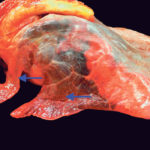
Lung defences needed for respiratory disease prevention
The respiratory system in animals serves a vital function — without the ability to breath, animals will succumb within minutes. Clean air with oxygen is breathed in through the nostrils and transported down the trachea and through the tree-like branches, where it enters the lungs. Here, oxygen is exchanged for carbon dioxide, refreshing the blood […] Read more
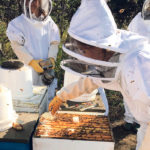
Vet students learn about ecosystem influences on health
Veterinary students spend most of their final year in veterinary programs refining and practicing clinical skills. For cattle, this might entail working on pregnancy checking, perfecting bull testing, designing herd health programs and optimizing parasite control. In a variety of species, vet students practice surgical and anesthesia skills. But each year, a small group of […] Read more




